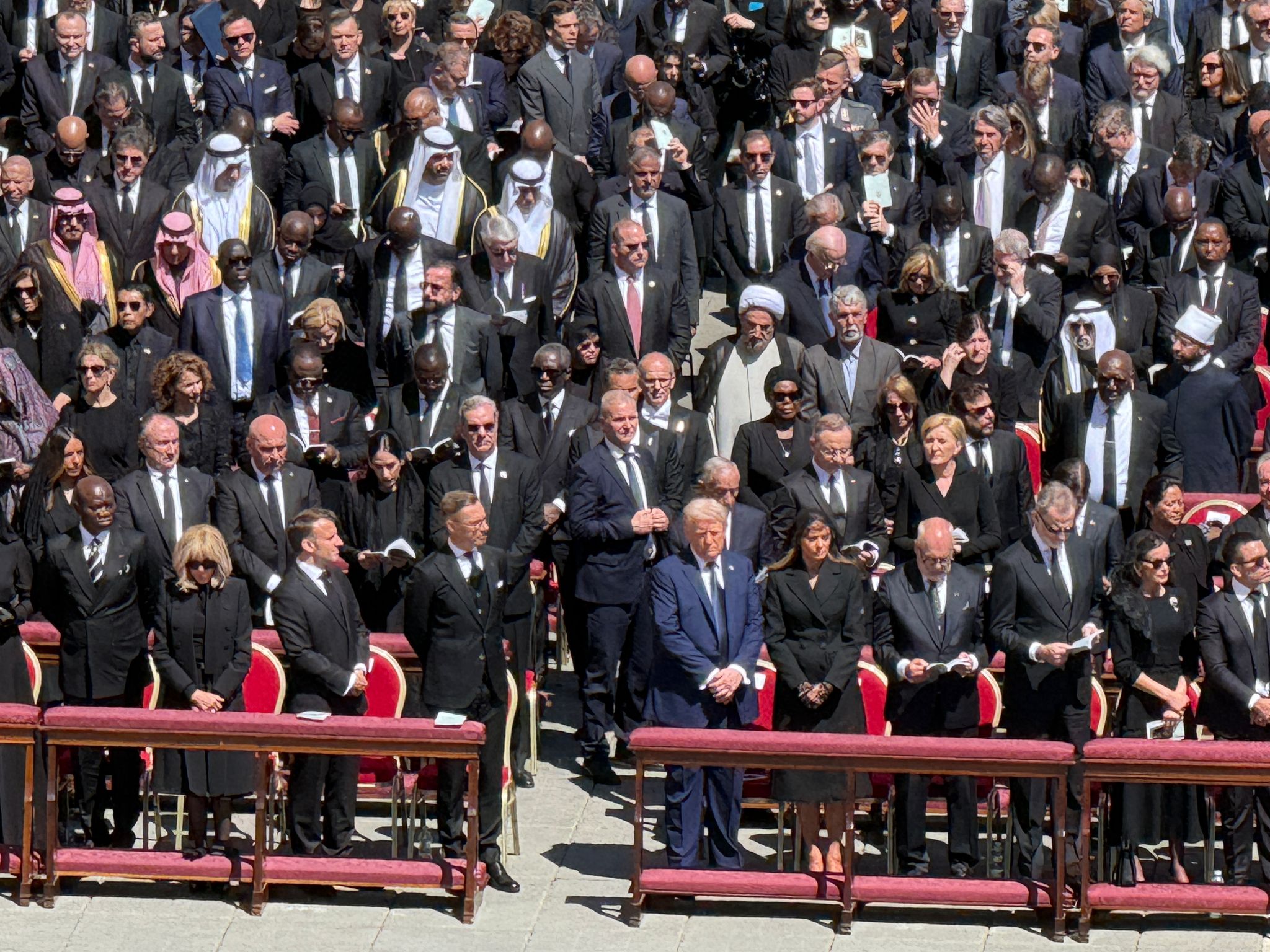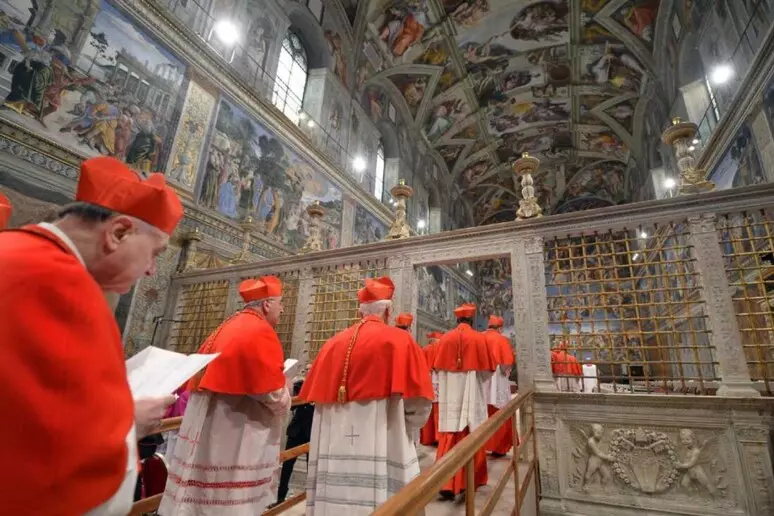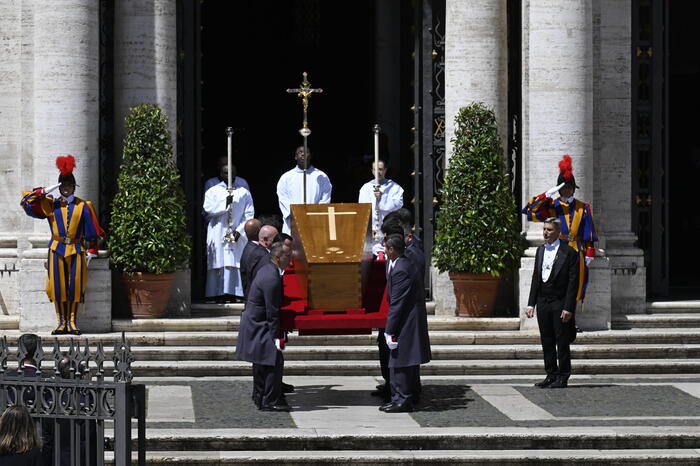World leaders – including Donald Trump and Volodymyr Zelensky, as well as Joe Biden – and the faithful, joined to pay their last respects to Pope Francis in St. Peter’s Square. After the funeral that was celebrated by the dean of the College of Cardinals, Giovanni Battista Re, the casket was conveyed between two wings of the crowd – perhaps 150,000 people – to the basilica of Santa Maria Maggiore on the Esquiline Hill, Francis’ chosen burial site.

Inside the coffin – simple wood covered with zinc – where Francis rests, lies also the Rogito for Pius Transitus and coins from the pontificate. The Rogito is a ceremonial document created upon the death of a Pope. Written in Latin, it summarizes the life, works, and ministry of the deceased Pontiff. This document is read aloud during the funeral rites and then placed inside the Pope’s coffin as a historical record and tribute.
More than 250,000 faithful have paid their respects to the body in recent days. The homily by the dean of the cardinalate, Giovanni Battista Re, recalled among other things the late pope’s commitment to migrants. “Innumerable are his gestures and exhortations on behalf of refugees and displaced persons,” Re said, ”constant also was his insistence on working on behalf of the poor. It is significant,” he added, “that Pope Francis’ first trip was to Lampedusa, an island symbolic of the tragedy of emigration with thousands of people drowned at sea.” Also in the same vein was the trip to Lesbos, together with the Ecumenical Patriarch and the Archbishop of Athens, as well as the celebration of a Mass at the U.S.-Mexico border on the occasion of his trip to Mexico.”

These are words that will hardly resonate in the souls of the 50 or so heads of state and royalty from around the world who landed in Rome to take part in the funeral. Donald Trump arrived at Fiumicino Airport accompanied by his wife Melania. It is his first state trip abroad since the start of his second term, and his presence is the focus of diplomatic meetings especially over Ukraine.
The Pope’s mortuary testament, read in the presence of Prime Minister Meloni, President of the Republic Sergio Mattarella and various world leaders, reserved a large space for the world’s most vulnerable, the migrants, the homeless, the victims of trafficking, the only real people he has always wanted to surround himself with, marking the humble and human dimension of his pontificate.

The Conclave to succeed Francis will not begin until mid-week. There are about 120 cardinal electors for the next pontiff. Two-thirds were appointed by Pope Francis and largely reflect his vision of a more inclusive Church.
In the Sistine Chapel, the cardinals will take an oath of absolute secrecy; on Conclave days they can have no relationship with the outside world; no newspapers and especially in this day and age, no smartphones. That is also why the charm of the ceremony with its ancient rites remains unchanged.
It’s impossible today to say who is the favorite among the candidates, even though many are throwing around names. After a Polish, a German and an Argentine pope will an Italian finally return? The front runner seems to be Pietro Parolin, who served as Secretary of State for Pope Francis. At 70, he hails from Vicenza and is considered a fine diplomat. He is credited with signing the protocol with China for the appointment of bishops.
Among the Italians we find Matteo Zuppi, a 69-year-old Roman, president of the Italian Bishops’ Conference; Franciscan Pierbattista Pizzaballa, patriarch of Jerusalem who is a fervid promoter of peace; and polyglot diplomat Claudio Gugerotti.
Among conservatives, however, the leading candidate is the Archbishop of Budapest, Peter Erdo, 72, an expert in canon law, a steel-hard “Ratzingherian”.
If the Church were ready for an African pope, the highest-ranked is the Archbishop of Kinshasa, Fridolin Ambongo, a Capuchin friar, one of the cardinals who opposed the blessings for same-sex couples sought by Pope Francis.
Among those closest to the late pontiff’s thinking, on the other hand, is the Filipino Luis Antonio Tagle, 67, created cardinal by Benedict XVI, a top-rated name for Asia, and again the Archbishop of Marseille, Jean Marc Aveline, 66, a French theologian born in Algeria.
Others in the running are Anders Arborelius, bishop of Stockholm, and Juan Jose Ornella, archbishop of Barcelona and a past as a missionary serving the most humble and vulnerable.
They will vote every day, morning and afternoon, until one candidate gets a two-thirds majority. And then twice a day the black or white smoke, produced by burned ballots colored by a chemical substance, will come out of the Sistine chimney.
After 30 votes, a simple majority will suffice.
The elected candidate is asked if he accepts and if so, what name he chooses as pontiff. He then dons papal vestments for the presentation; three sets of robes in different sizes, are prepared by Vatican tailors to cover all eventualities.
The dean of cardinals will stand on the main balcony of St. Peter’s Basilica before the faithful, alerted by the white smoke, and proclaim “Nuntio vobis gaudium magnum: Habemus papam”: “I announce to you a great joy: We have a pope.”












